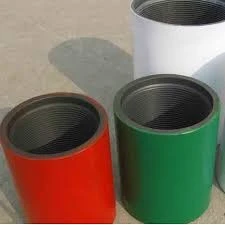- Afrikaans
- Albanian
- Amharic
- Arabic
- Armenian
- Azerbaijani
- Basque
- Belarusian
- Bengali
- Bosnian
- Bulgarian
- Catalan
- Cebuano
- Corsican
- Croatian
- Czech
- Danish
- Dutch
- English
- Esperanto
- Estonian
- Finnish
- French
- Frisian
- Galician
- Georgian
- German
- Greek
- Gujarati
- Haitian Creole
- hausa
- hawaiian
- Hebrew
- Hindi
- Miao
- Hungarian
- Icelandic
- igbo
- Indonesian
- irish
- Italian
- Japanese
- Javanese
- Kannada
- kazakh
- Khmer
- Rwandese
- Korean
- Kurdish
- Kyrgyz
- Lao
- Latin
- Latvian
- Lithuanian
- Luxembourgish
- Macedonian
- Malgashi
- Malay
- Malayalam
- Maltese
- Maori
- Marathi
- Mongolian
- Myanmar
- Nepali
- Norwegian
- Norwegian
- Occitan
- Pashto
- Persian
- Polish
- Portuguese
- Punjabi
- Romanian
- Russian
- Samoan
- Scottish Gaelic
- Serbian
- Sesotho
- Shona
- Sindhi
- Sinhala
- Slovak
- Slovenian
- Somali
- Spanish
- Sundanese
- Swahili
- Swedish
- Tagalog
- Tajik
- Tamil
- Tatar
- Telugu
- Thai
- Turkish
- Turkmen
- Ukrainian
- Urdu
- Uighur
- Uzbek
- Vietnamese
- Welsh
- Bantu
- Yiddish
- Yoruba
- Zulu
vacuum hose coupling
Understanding Vacuum Hose Couplings Essential Components in Automotive and Industrial Applications
Vacuum hose couplings are integral components in various systems, primarily in automotive and industrial applications, where they play a crucial role in managing air and fluid dynamics. These couplings are designed to connect flexible vacuum hoses to other components such as pumps, valves, and engines. Their significance lies in ensuring a reliable and leak-free connection, which is vital for the efficient functioning of vacuum systems.
The Functionality of Vacuum Hose Couplings
At their core, vacuum hose couplings facilitate the transfer of materials while minimizing the risk of contamination and leaks. In the automotive industry, they are commonly utilized in vehicles to connect different vacuum-operated systems, such as the brake booster, which relies on vacuum pressure to function effectively. A secure coupling ensures that the vacuum can be maintained without interruption, which is essential for safety and performance.
In industrial applications, vacuum hose couplings are similarly important
. They are used in various processes, including material handling, packaging, and even in certain manufacturing operations where vacuum is essential for operations like suction lifting or vacuum filtration. The reliability of these couplings directly impacts the efficiency of the operations, as any leakage can lead to performance degradation and operational hazards.Types of Vacuum Hose Couplings
Vacuum hose couplings come in various types, including quick-connect couplings, threaded couplings, and barbed fittings. Each type serves different purposes and is chosen based on the specific requirements of the application.
vacuum hose coupling

1. Quick-Connect Couplings These are designed for ease of use, allowing for rapid connection and disconnection without the need for additional tools. They are particularly useful in environments where equipment needs to be frequently reconfigured.
2. Threaded Couplings This type provides a tight seal and is often used in more permanent installations. The threaded design ensures that the coupling remains secure under pressure, making it ideal for heavy-duty applications.
3. Barbed Fittings These are commonly used with flexible hoses and are designed to create a strong grip on the hose, minimizing the chances of disconnection. They are typically used in systems where flexibility and ease of movement are required.
Materials and Durability
Vacuum hose couplings are made from various materials, including plastic, rubber, and metal, each with its own advantages. For instance, plastic couplings tend to be lighter and resistant to corrosion, making them suitable for applications where weight savings are critical. Metal couplings, on the other hand, offer strength and durability, which is essential for high-pressure applications.
Conclusion
In conclusion, vacuum hose couplings are essential components that ensure the effective operation of vacuum systems across different industries. Their ability to provide secure, reliable connections while withstanding various environmental factors is crucial for maintaining performance and safety. Whether in automotive applications or industrial processes, understanding the various types and functions of vacuum hose couplings can lead to better maintenance and enhanced operational efficiency. Investing in high-quality couplings is a small yet significant step toward ensuring the longevity and reliability of vacuum systems.
-
Tubing Pup Joints: Essential Components for Oil and Gas OperationsNewsJul.10,2025
-
Pup Joints: Essential Components for Reliable Drilling OperationsNewsJul.10,2025
-
Pipe Couplings: Connecting Your World EfficientlyNewsJul.10,2025
-
Mastering Oilfield Operations with Quality Tubing and CasingNewsJul.10,2025
-
High-Quality Casing Couplings for Every NeedNewsJul.10,2025
-
Boost Your Drilling Efficiency with Premium Crossover Tools & Seating NipplesNewsJul.10,2025







